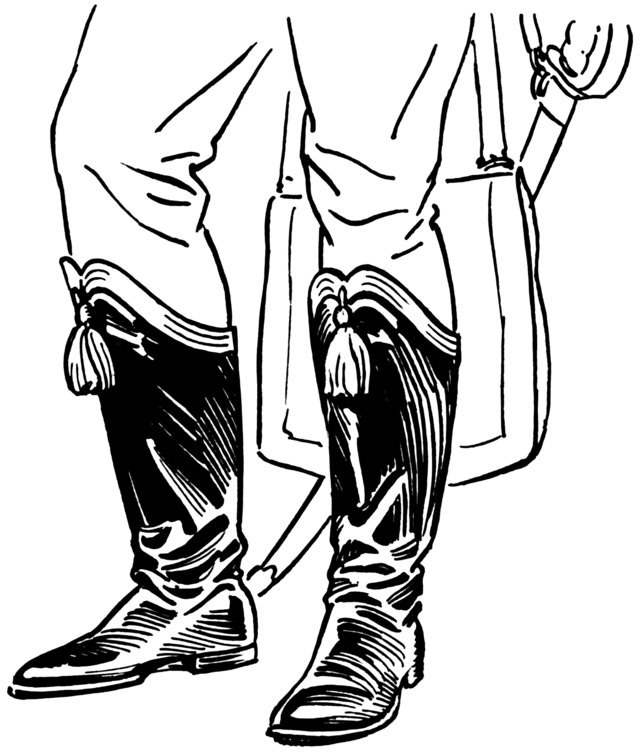 Cravats
Cravats
Cravats were developed from Croatian mercenaries honored by Louis XIV in France during the 17th century. It was not until early 19th century that the cravat achieved the height of fashion in France and England. The French called it 'cravate', French for Croat or Croatian. The word "cravat," lost its French final "e" when it crossed to England. Once in England the cravat replaced the neck-high lace collars of Charles I and II. At first it was a straight narrow strip of lace or linen, hanging down from the neck. In the 18th century the jabot took over, the ruffled and embroidered shirt-front billowing up over the opening of the waistcoat almost to conceal the neckcloth, which now buttoned at the back. Later the neckcloth reestablished itself over the jabot, covering the shirt-front and evolving into the stock, which grew freer and more voluminous in its proportions as time went on.
An endless variety of cravats appeared, including cravats of tasseled strings, plaid scarves, tufts and bows of ribbon, lace, and embroidered linen all had their staunch adherents. Nearly one hundred different knots were recognized. Collars grew higher at the turn of the 19th century. Pointed edges around the chin and cheeks became fashionable. Cravats were wrapped tightly around the neck ending in bows of varying length. Cravats, at this period, were sometimes as much as a foot high, with the points of the collars rising half-way up the face and obliging gentlemen to keep their chins and their heads well up in the air.
It was George "Beau" Brummel who first elevated the cravat into a cult by starching his neckwear, creating novel, intricate knots that might take up to an hour to tie. He was the first to introduce starch into it, insisting that it should be stiffened to the "consistency of fine writing paper". Cravats grew more casual again as the 19th century went on and gradually shrank into smaller bows as the century progressed. Collars became lower, with wide enough gaps between the points to allow the head to move freely from side to side.

Alternative Neckclothes
There were a variety of alternatives to the cravat available to 18th and 19th century men and boys. The most common was the "stock". A cravat was a generally long piece of cloth that wound around the neck and tied in front. Stocks were fastened in back by a hook or knot. The stock in front had what to the modern eye looks something like a pre-tied bowtie. Some stocks appeared to be a wide cravat swathing the neck almost like a poultice. They were not the most comfortable of neckwear. A man or boy wearing one would be forced to stand or sit upright in a rather stiff position. The "solitare" appeared in the mid-18th century and was attached in the back to the wig, wrapped around the neck, and brought to a bow in front over a cravat. "Macaronis" appeared in England during the mid-18th century on dandies affecting an Italian-inspired fashion, coloring their cheeks with rouge, wearing diamond-studded pumps, and cravats with huge bows. Those who adopted these massive cravats were called the incroyables, meaning the "incredibles". They wore such large cravats that their chins were hidden.
It was the necktie which finally replaced the cravat in the late 19th Century. Inexpensive, it lasted for ever, and was easy and quick to knot.
Buy a Regency Cravat at our online giftshop,
click here!
 Alwyn Garden works from her home studio as a historical costumier. She enjoys researching historical sewing methods and particularly enjoys making 18th and 19th century costume for both men and women. She is the resident seamstress for the historical dance troupe 'The Bordonian Heritage Dancers' and organises monthly costume balls in Canberra. View her designs at Regency Reproductions.com.
Alwyn Garden works from her home studio as a historical costumier. She enjoys researching historical sewing methods and particularly enjoys making 18th and 19th century costume for both men and women. She is the resident seamstress for the historical dance troupe 'The Bordonian Heritage Dancers' and organises monthly costume balls in Canberra. View her designs at Regency Reproductions.com. Cravats
Cravats Alwyn Garden works from her home studio as a historical costumier. She enjoys researching historical sewing methods and particularly enjoys making 18th and 19th century costume for both men and women. She is the resident seamstress for the historical dance troupe 'The Bordonian Heritage Dancers' and organises monthly costume balls in Canberra. View her designs at Regency Reproductions.com.
Alwyn Garden works from her home studio as a historical costumier. She enjoys researching historical sewing methods and particularly enjoys making 18th and 19th century costume for both men and women. She is the resident seamstress for the historical dance troupe 'The Bordonian Heritage Dancers' and organises monthly costume balls in Canberra. View her designs at Regency Reproductions.com.



4 comments
This is very interesting, though the AUTOMATIC translation into French is terrible, most of the sentences mean nothing at all and are riddled with mistakes ! (I’m French myself). I do not dare to check the other pages on your website. But it would certainly be a good idea to hire a human translator… at least to correct these meaningless texts.
Quincie
Thank you this was very informative
Anonymous
ipiliiajajz
iyihece
Leave a comment
This site is protected by hCaptcha and the hCaptcha Privacy Policy and Terms of Service apply.